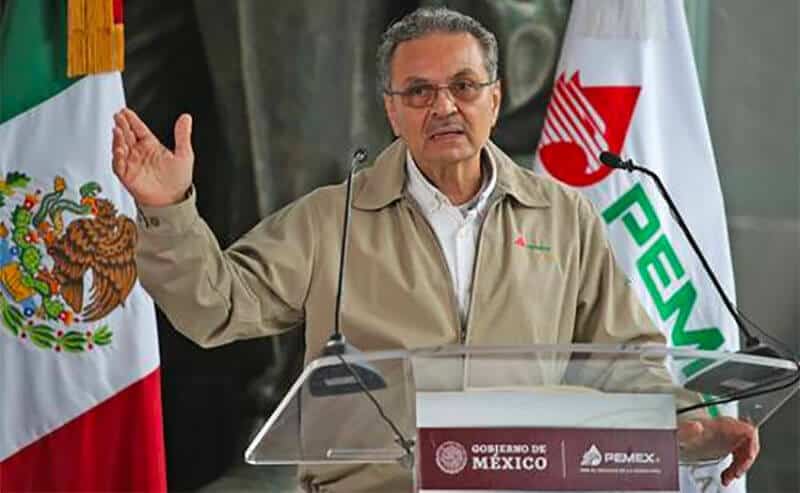Pemex is set to lose approximately US $25 million per day while an an offshore oil platform remains out of action as a result of a fire that claimed the lives of at least five workers.
The state oil company was forced to cease operations at the E-Ku-A2 platform, part of a gas processing center in the Ku-Maloob-Zaap oil field, located in Campeche Bay.
Pemex also had to shut down 125 wells from which 421,000 barrels of oil are usually extracted per day. That quantity of oil accounts for just under 25% of the company’s average daily production of 1.7 million barrels.
A barrel of Mexican oil is currently selling for about US $60, at which price daily losses due to the platform closure would add up to almost $25.3 million.
The newspaper Milenio calculated a daily loss of $24.9 million based on a recent per barrel price of $59.16, while El Universal determined a $26.2 million loss based on a price of $62.22.
“Right now the platform is still not operating, so they can’t continue to extract oil,” Pemex CEO Octavio Romero told a press conference on Monday.
“The wells are closed. And we hope to resume production as soon as possible,” he said, adding that could occur within days.
The 80-minute blaze on Sunday afternoon – which claimed the lives of one state oil company employee and four workers with oil services group Cotemar – followed a spectacular inferno on the surface of the Gulf of Mexico in Campeche Bay in early July. Pemex said that fire was caused by a lightning strike after gas began leaking from an underwater pipeline. There were no casualties nor was there any damage to Pemex facilities.
Romero asserted that no incidents at Pemex facilities during the current government were caused by a lack of maintenance or neglect, and therefore losses incurred will be covered by insurance.
“No case is associated with abandonment or negligence due to not attending to intolerable risk situations; that is the case with the event yesterday [Sunday] with the fire on the E-Ku-A2 platform,” he said.
The CEO said that adverse incidents at Pemex facilities caused losses of $923.1 billion between 2013 and 2018 but losses were only $64 billion between 2019 and June 2021.

“There is no problem of lack of investment and resources; the oil industry is risky [but] accidents are numerically lower than in past administrations,” Romero said, adding that the government has recently increased Pemex’s maintenance budget.
The safety of workers is Pemex’s priority, he said, stressing that they were more important than reaching production goals.
However, there is evidence that the heavily indebted state oil company is not maintaining all its facilities as it should be.
Pemex workers last month denounced unsafe working conditions and a lack of proper maintenance at the company’s maritime terminal in Pajaritos, Veracruz. Footage broadcast by Televisa showed that parts of the terminal were on the verge of collapse.
Workers said that Pemex had only carried out superficial repairs to structural damage on the wharf, where oil tankers offload crude for transfer to refineries.
“We experience conditions of insecurity, there have been accidents because they’re not taking the right [maintenance] measures,” said Ricardo Castelo, one of two former Pemex workers who were dismissed this month for speaking out about the situation.
Speaking at his news conference on Monday, President López Obrador, who has pledged to “rescue” the state utility from what he describes as years of neglect before he took office, lamented the deaths of the five oil workers on Sunday.
Pemex said in a statement that six other people were injured and are receiving treatment in hospital, while two were missing. The latter worked for the company Bufete de Monitoreo de Condiciones e Integridad.
The fatal blaze occurred while Pemex – saddled with more than $100 billion in debt – is amid a recovery phase after recording heavy losses in 2020 as global demand for oil slumped due to the coronavirus pandemic.
The company posted a $723 million profit in the second quarter of this year but has scant resources to reinvest because most of its earnings are consumed by tax payable to the Mexican state.
With reports from Milenio and Financial Times
